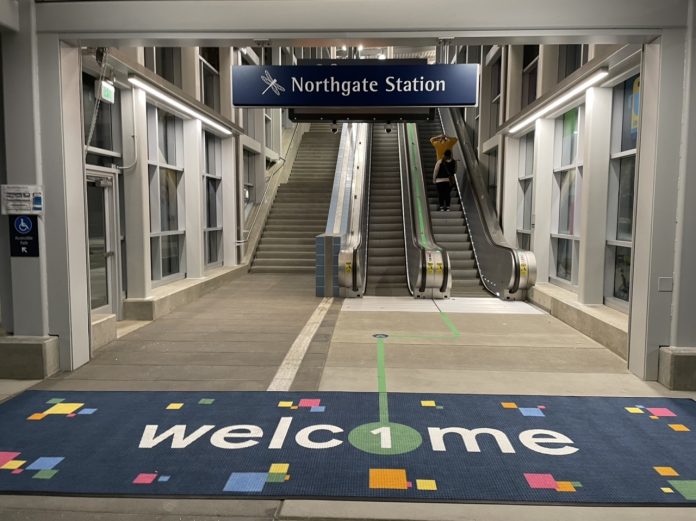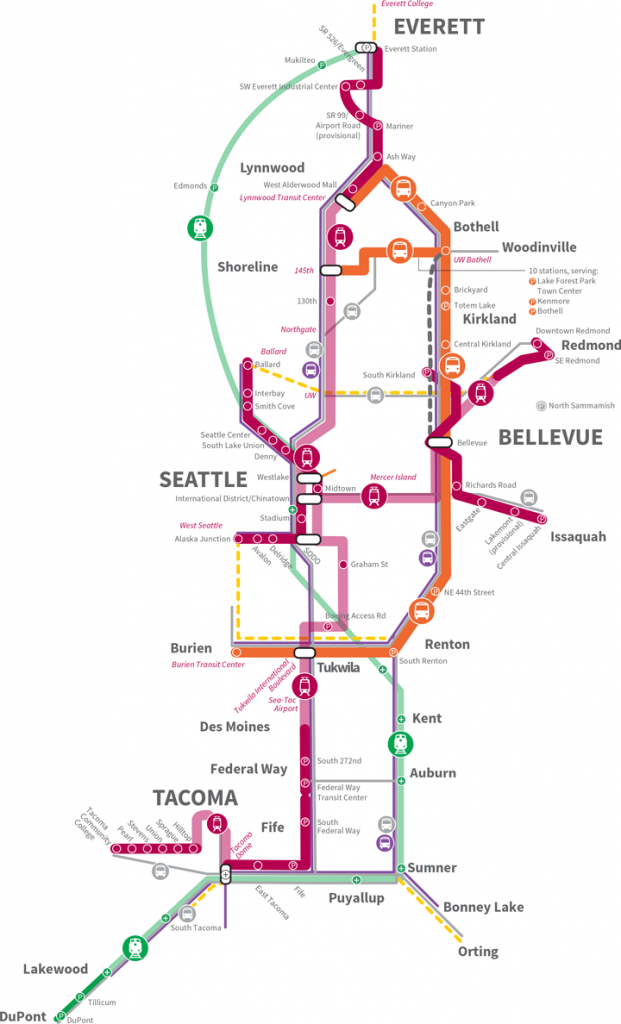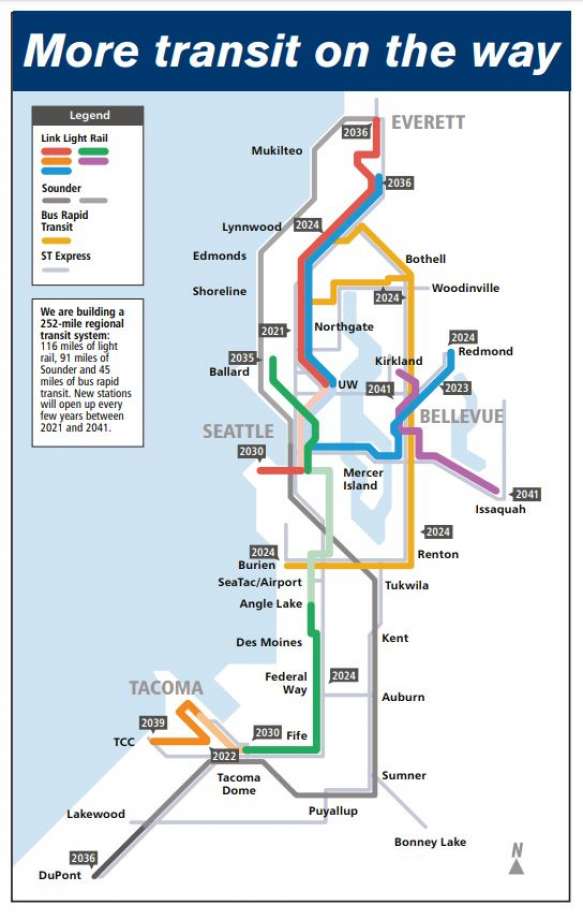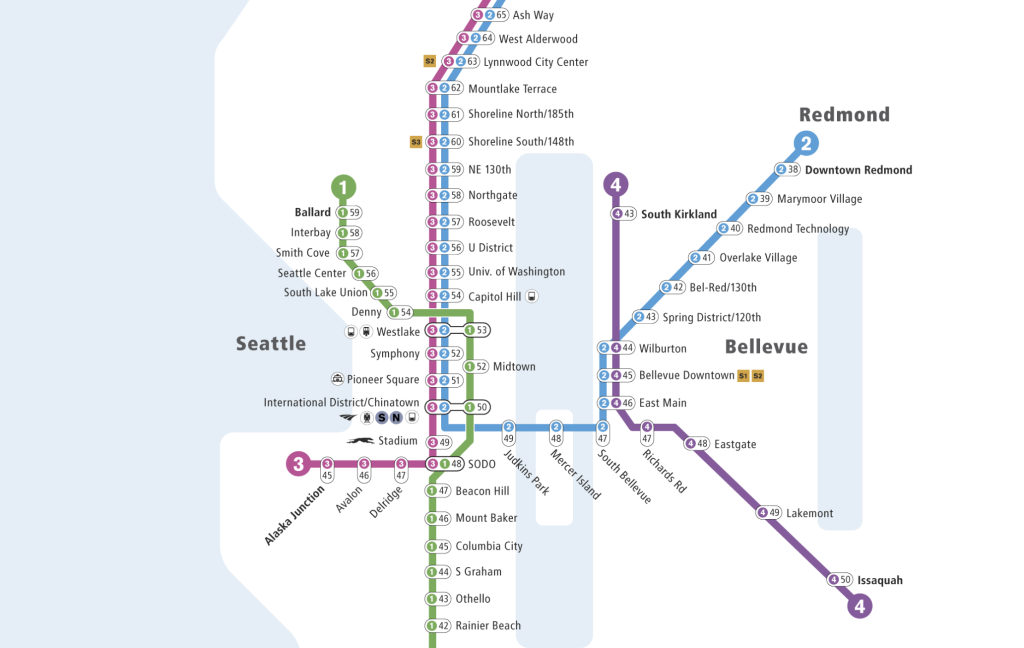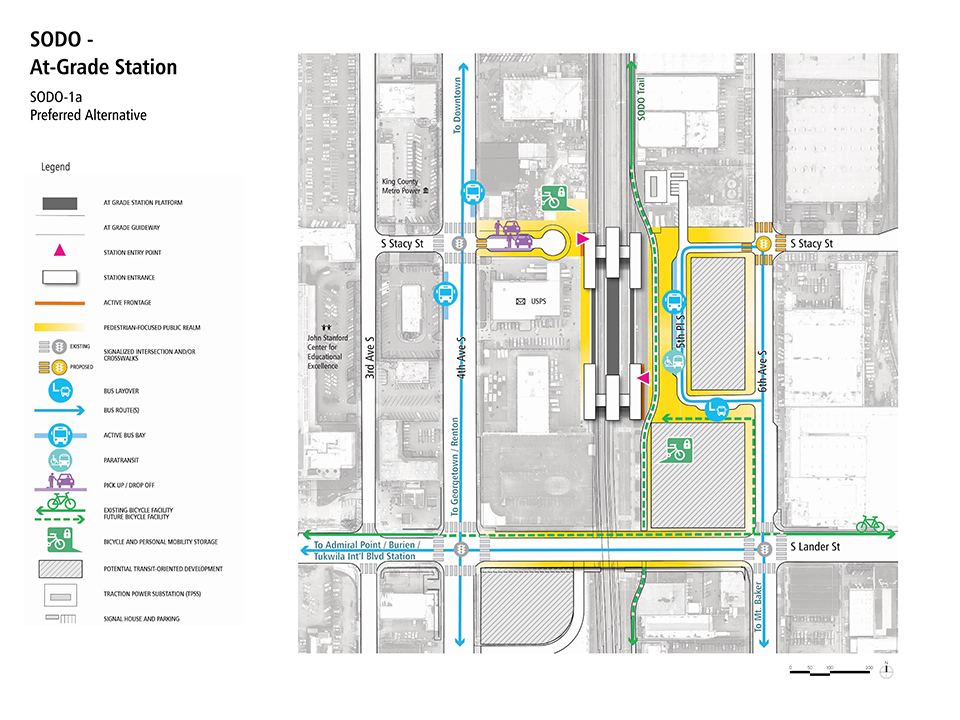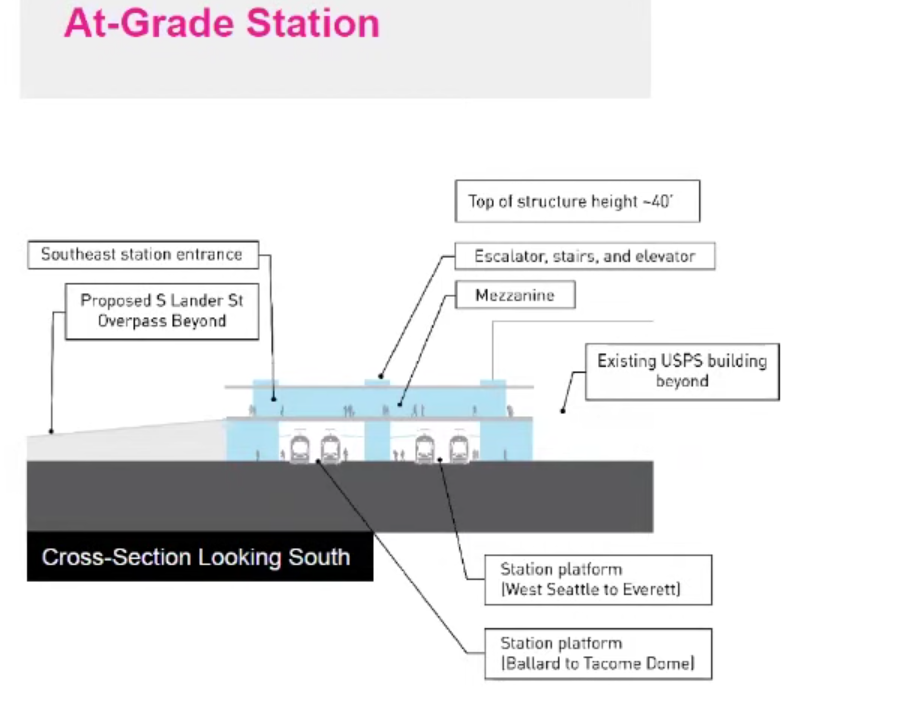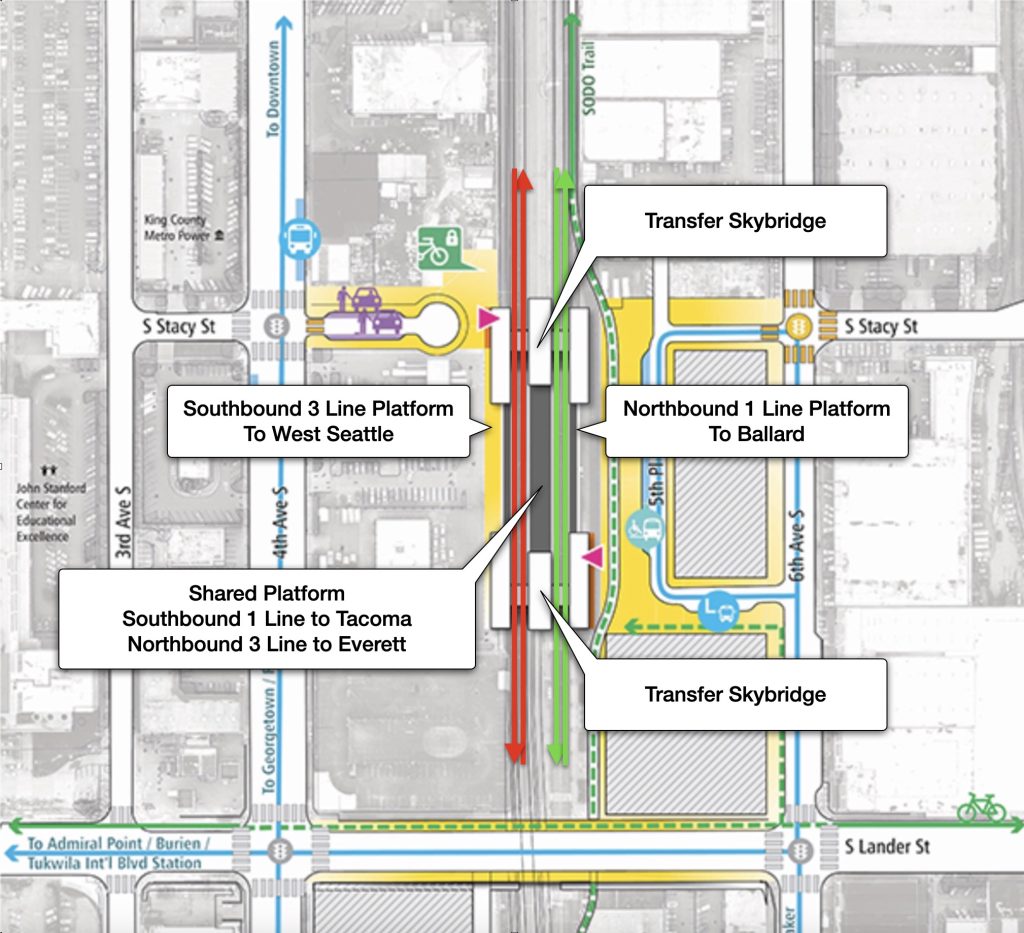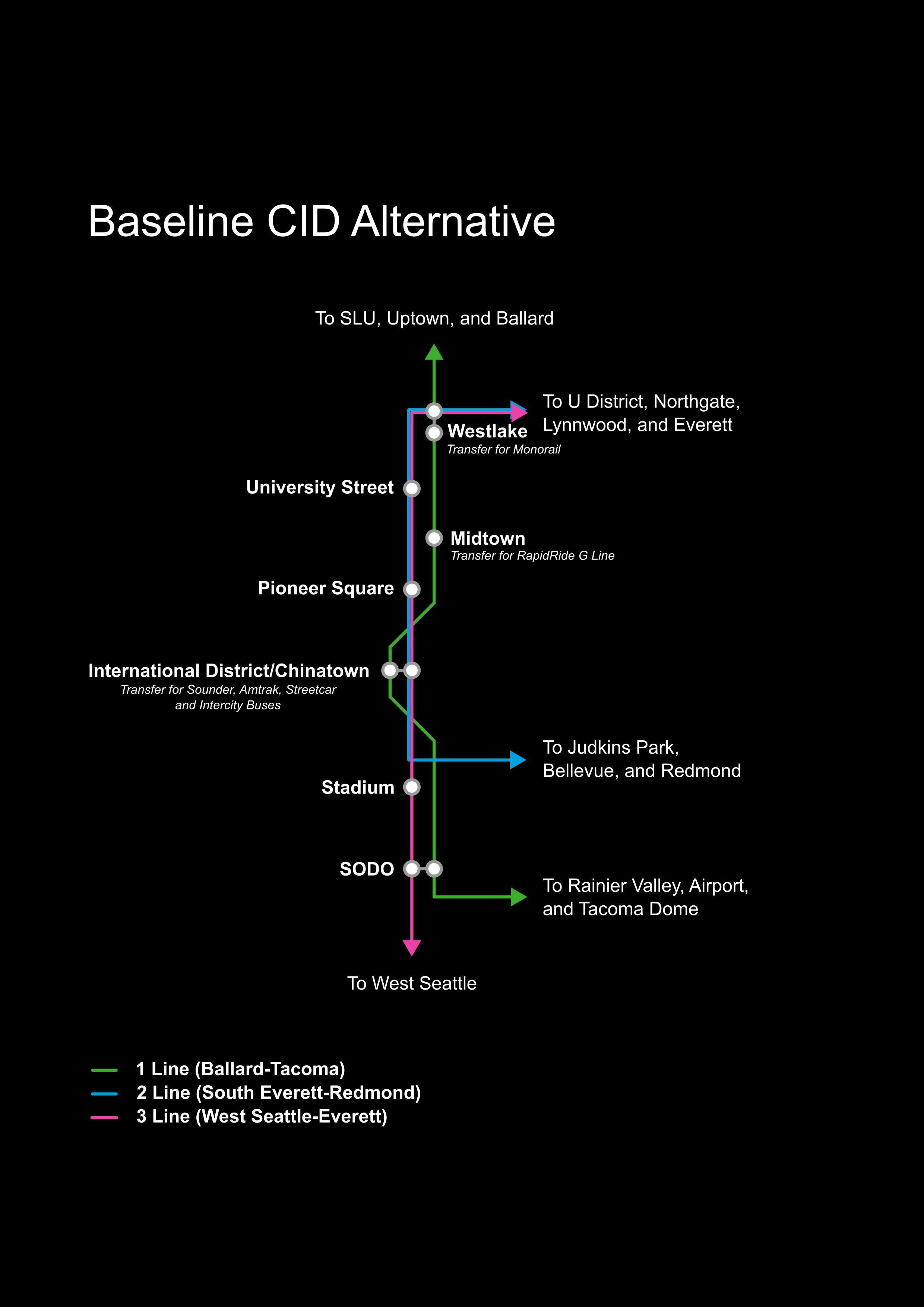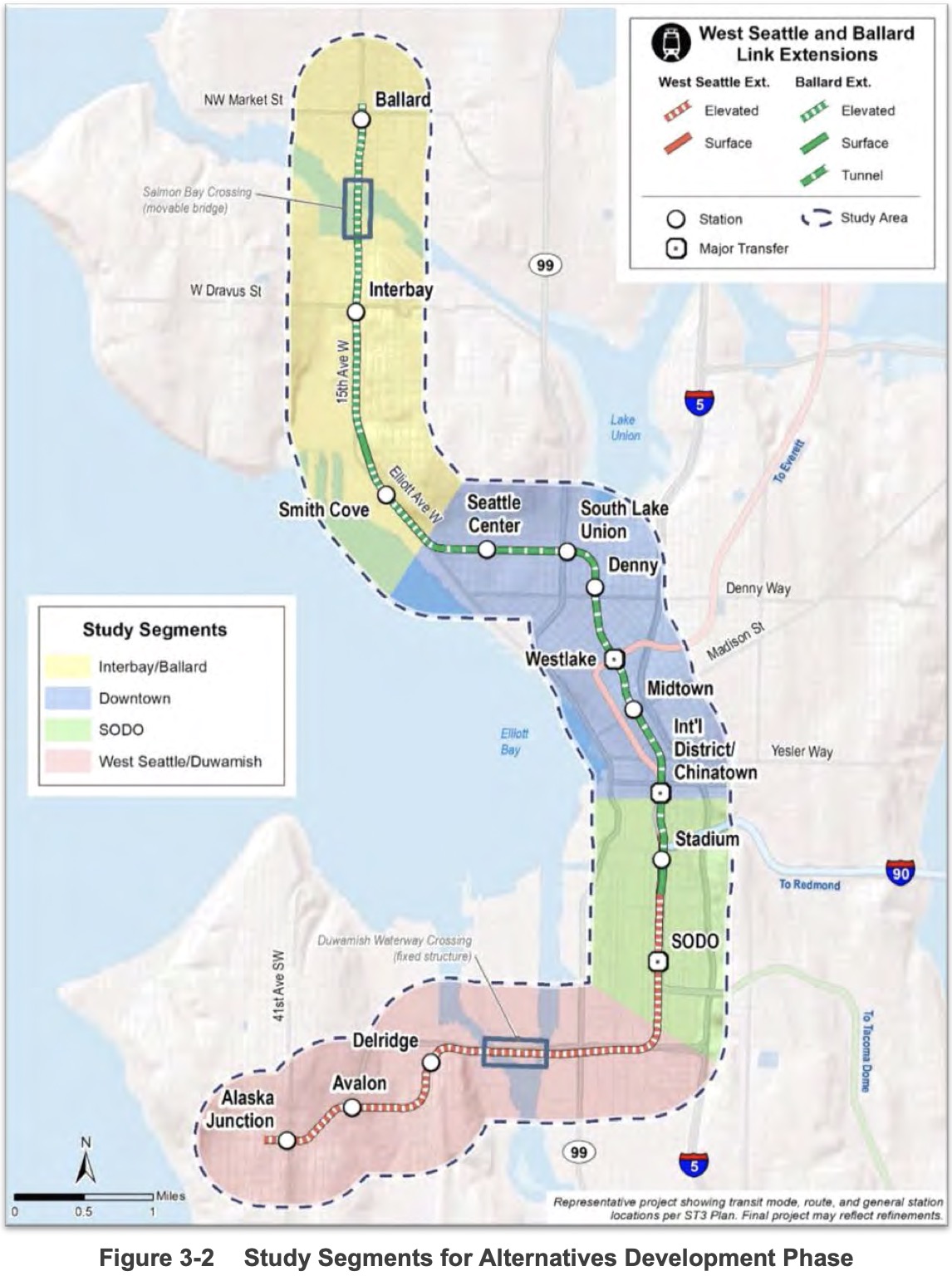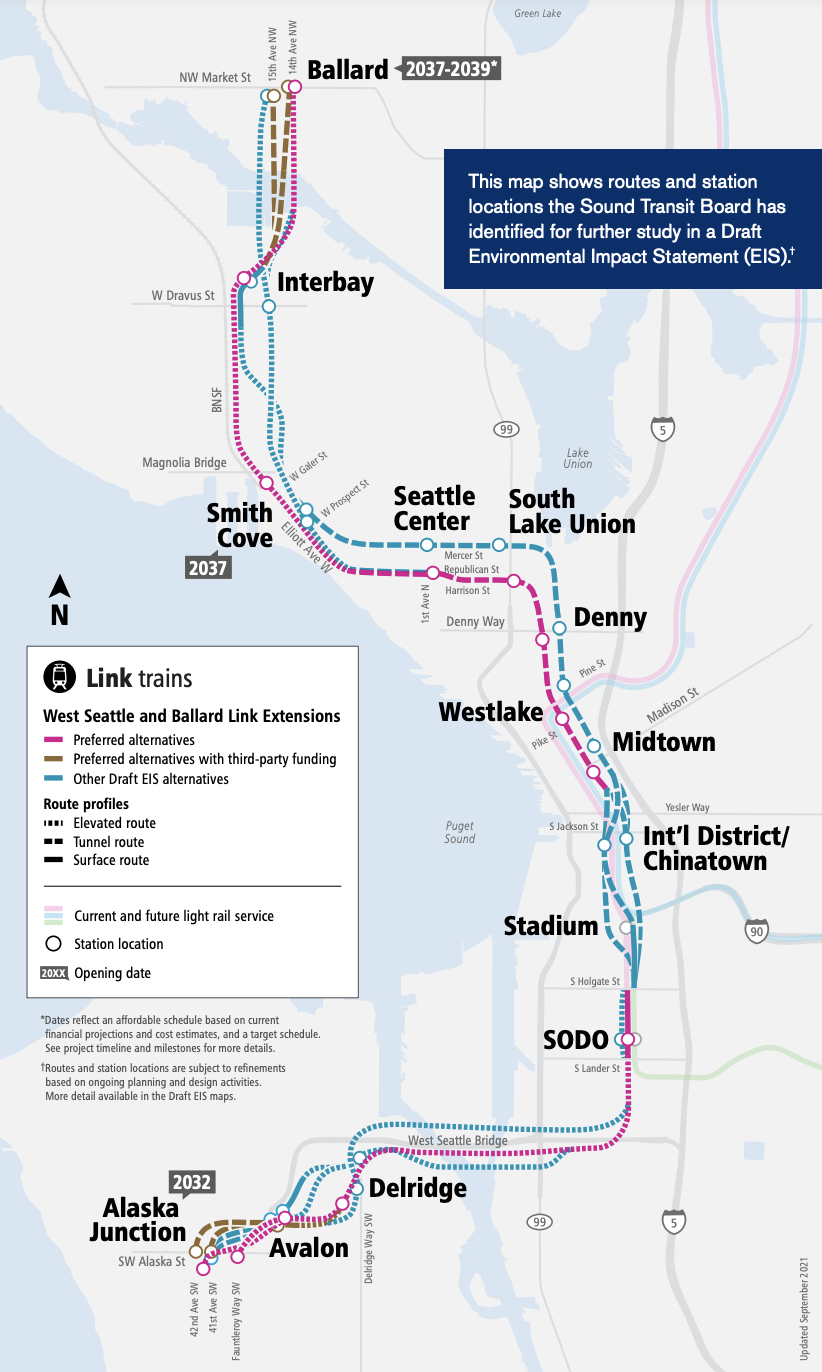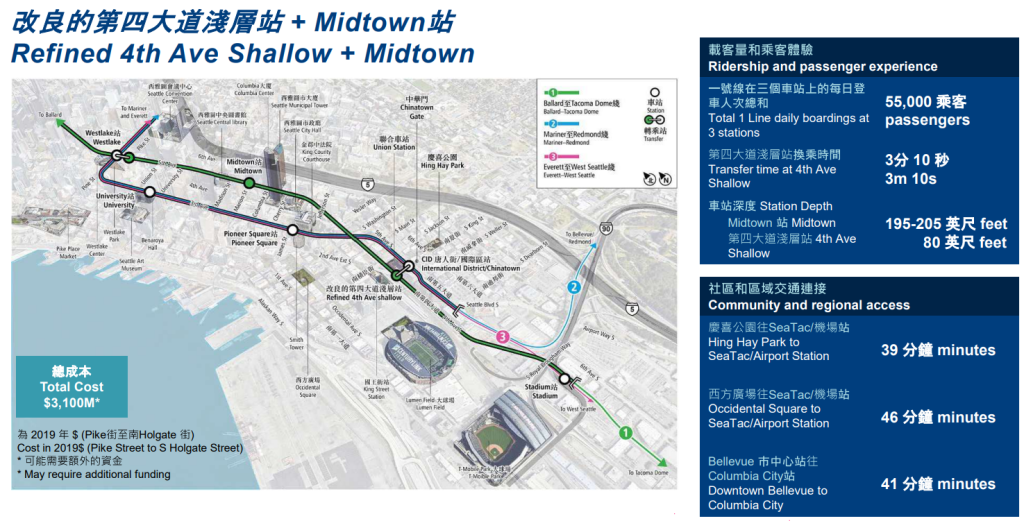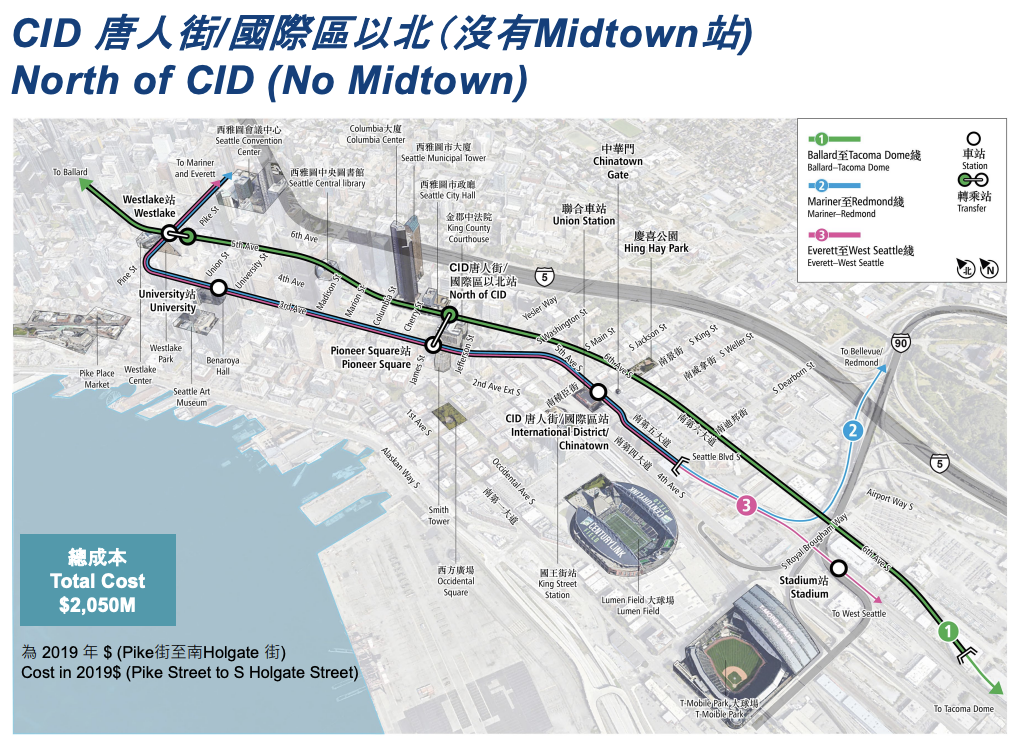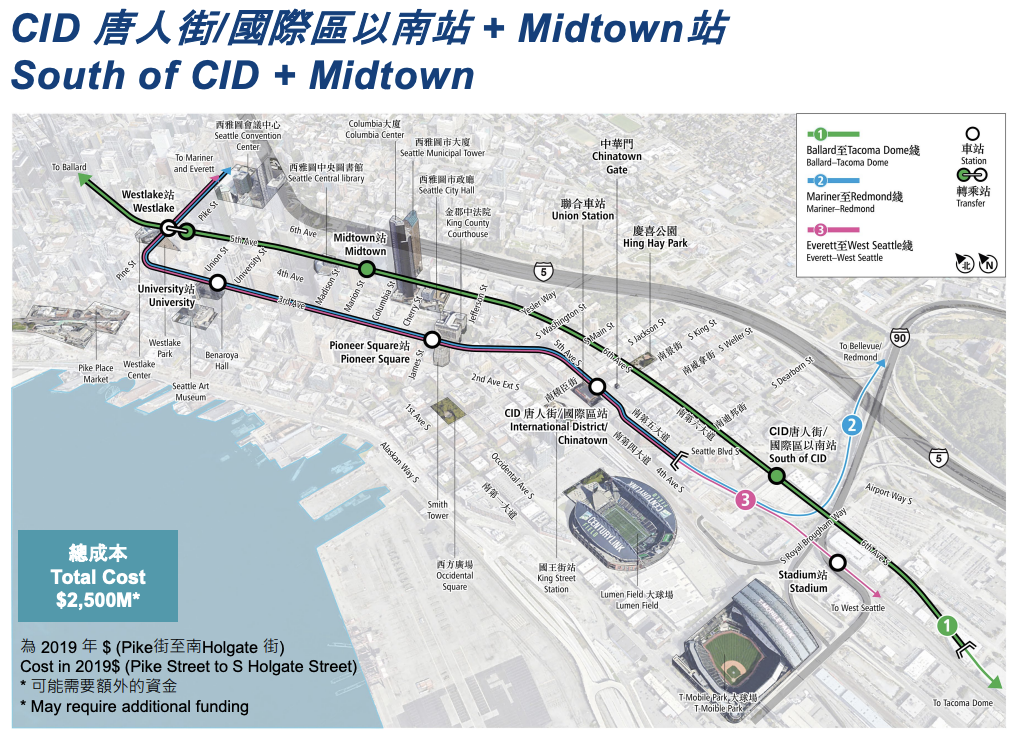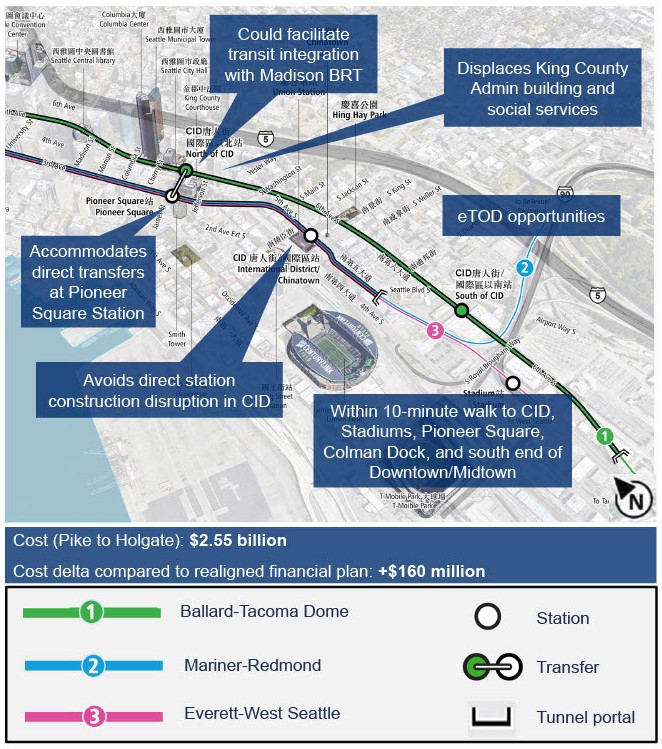There is no spine. There is no Ballard to West Seattle extension. There is no one coming to save us.
By 2042, Seattle should have four Link light rail lines covering downtown and branching out to Redmond, Issaquah, Everett, and Tacoma. Though some opening dates are decades away, a lot of decisions are being made now. Specifically, the environmental review process is well underway to set the future location of stations and routes for many of these lines.
Unfortunately, the public perception of what Link Light Rail is supposed to look like and what is actually being planned are two different things. The biggest misconceptions stem from the original Sound Transit 3 vote map and budget. The map was simple and direct enough to win the vote, but also misleading. Having all the light rail in red does not portray the scope of what’s about to be built.
The original map has led people believe there is going to be a unified spine that all other tracks are branching from, that new lines will only improve and extend a current baseline, and the new stations are going to connect and function like the current ones. And they think the money is in place to make this happen.
None of these perceptions are true. Sound Transit, with technical maps and few easy-to-understand overviews, is not doing a very good job clarifying. For those who don’t live in the weeds of transit engineering reports, there are three important facts to know about the future of Seattle’s light rail system.
Fact 1: The Spine will be broken.
Currently, the existing 1 Line runs in a straight path from Northgate, through downtown, past SeaTac Airport, to Angle Lake. This is a pretty easy and understandable foundation that many consider the basis for the system. It’s not going to last. The current spine will be broken to accommodate future routes.
As new extensions come on line over the next twenty years, the current route will be split in two. Trains from the existing south line will come into the SoDo station, then enter their own brand new tunnel towards Seattle Center and Ballard as the new 1 Line. Trains from the north will come down through the existing downtown tunnel. Of those, trains starting in Mariner (just north of Lynnwood) will get to the Chinatown-International District (CID) then head to Bellevue and Redmond as the new 2 Line and trains starting in Everett will get to the SoDo station then head to West Seattle as the 3 Line.
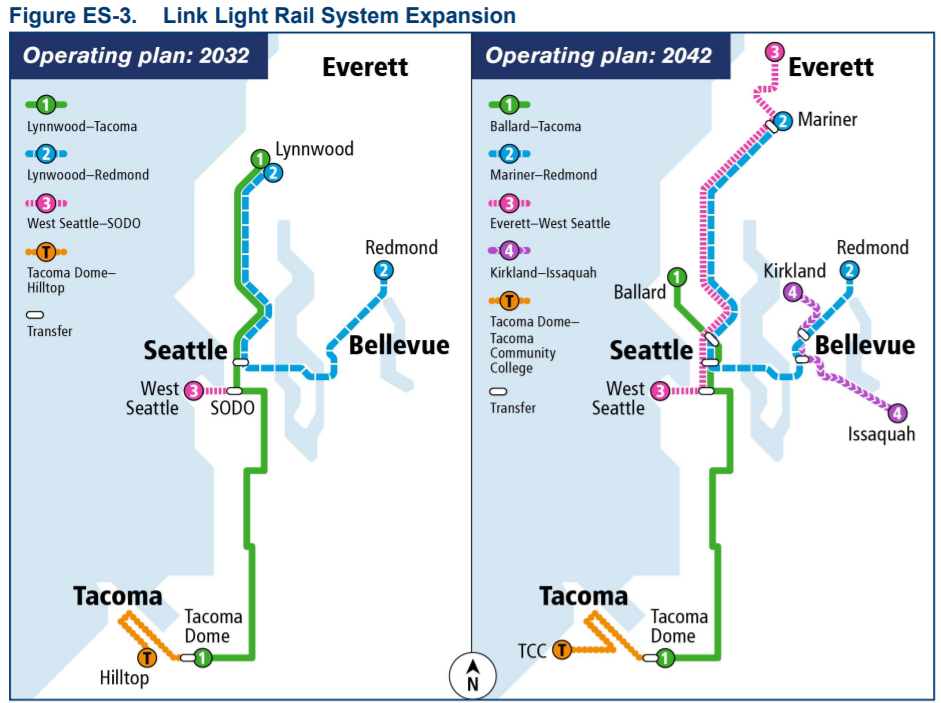
This makes for future weirdness at places like SoDo, where the existing route to SeaTac and the new route to West Seattle share a station as parallel lines with both at ground level. It will be like a double stuffed Oreo, without taking the extra chocolate cookies off. The new 1 Line (Ballard to Tacoma) will take over the existing tracks and a new set of tracks will be constructed on the west side for the 3 Line (Everett to West Seattle).
This is great for West Seattleites going to the airport who will simply walk across the shared platform to their southbound train. But returning home, they will have to leave their train, cross all the tracks in a sky bridge, and wait for the southbound train home. Ballard gets the direct link to SeaTac, West Seattle gets the link to Northgate. Which leads us to Fact #2:
Fact 2: Ballard and West Seattle are two separate projects.
The voter approved expansions to West Seattle and Ballard came simultaneously, so for many, it sounded like the new expansion would go from West Seattle TO Ballard. That’s not the case. When the current light rail spine is broken, trains from Ballard will go to SeaTac and south as Link 1 Line. Trains from Everett will go to West Seattle as the Link 3 Line. These two lines will split at SoDo. The remaining Link 2 line will come into the CID from Bellevue and share the tunnel and tracks with the Link 3 Line as far as Mariner.
This confusion is not helped by the environmental studies and publicity about ST3 talking about the projects together. It takes getting into the actual text of Sound Transit publications, where they have been very explicit to state that these are “Extensions,“ plural. Although that “s” has been occasionally missed.
The dual projects are not the same. Extending from SoDo to West Seattle requires construction of the combined SoDo station, then five miles of rail and four new stations. The extension to Ballard has a total of seven miles of new line and nine stations. These go through a brand new downtown tunnel running from the CID through Interbay, with six stations in the tunnel and three stations going up NW 15th Avenue. The new tunnel will cross the existing transit tunnel for transfers at the north and south ends.
This complex weaving of tunnels is why there has been so much focus on building a new station in the Union Station/CID area. Any trip switching between tunnels would best occur where all three lines intersect, namely Westlake and Union Station. Those are the places where the tunnels will be closest horizontally, vertically, and to connecting bus and rail lines.
Other, off-the-cuff options that are being floated shift the vital southern transfer deep into downtown, resulting in confusing labyrinths, backtracking commutes, and other ridership-crushing delays. South Seattle would no longer be able to access Chinatown without passing it and backtracking. Visitors from SeaTac would not have a one-seat ride to hotels south of Yesler Way.
Regardless of the delay they produce, some of the terrible options are likely moving forward, and that’s because:
Fact 3: $54 billion is not enough to build the system.
When voters passed the levy for Sound Transit 3 in 2016, the eye-popping price tag sounded like more than enough money to add connections across the region. It almost would be given modest inflation and sticking to an aggressive construction schedule. None of those happened, plus there was a pandemic that sent prices for labor and materials soaring.
Additionally, the plans that were attached to the ST3 bill were “representative alignments,” or the agency’s best guesses on how to get transit to different parts of town. Anyone who has ever done DIY construction knows the issue. It doesn’t even have to be an upgrade, there are just issues you uncover as projects progress. Sometimes you find out the tub needs to be replaced.
Wouldn’t it be nice for someone to hand you a Lowe’s gift card right about then. Well, Sound Transit has found out that lots of bathtubs need to be replaced, so they are looking for third-party funding for some stations and alignments. Unfortunately, that means other groups can come up with funds to sway decision making about station plans. Most recently, King County Executive Dow Constantine threw out a Civic Campus plan to redevelop downtown county buildings and promised $400 million to Sound Transit to move a station north of CID. This wipes out a potential connection to Union Station and all its trains for anyone on the Ballard-Tacoma 1 Line, as well as the Capitol Hill accessing Midtown Station for everyone. Why this money was not part of the station plans before, or why it cannot be used to accelerate the timeline and mitigate impacts in the CID is unclear. Dow’s offering a gift card, but gets to decide we’re installing his favorite outdoor grill instead of needed plumbing.
Together, these three misunderstandings, plus the long timeframe for construction, are coalescing to allow politicians to play games with a massive infrastructure project for short-term vanity projects. It is vital to understand that we are looking at extensions that rewrite and rewire the system. What works today will require transfers tomorrow. Poorly done extensions and transfers will deteriorate the system.
Making transfers difficult will not “just add five minutes” to someone’s commute. For some riders, it will be more like ten minutes. Delays mean dashes across platforms, missed connections, and people deciding to simply not use transit. Difficult stations don’t just hurt future riders. They suck operating and construction funds from existing routes and put future plans in jeopardy. And they diminish the trust that the city, state, and Sound Transit have a lick of common sense.
Provide feedback to the Sound Transit Board at meetingcomments@soundtransit.org before their March 23rd meeting. To speak in-person at the 1:30pm meeting at Union Station, sign up at least 30 minutes before the meeting. To speak virtually online, you must sign up at least five minutes before the meeting. Virtual signup opens at 8:00am the day of the meeting.
Ray Dubicki is a stay-at-home dad and parent-on-call for taking care of general school and neighborhood tasks around Ballard. This lets him see how urbanism works (or doesn’t) during the hours most people are locked in their office. He is an attorney and urbanist by training, with soup-to-nuts planning experience from code enforcement to university development to writing zoning ordinances. He enjoys using PowerPoint, but only because it’s no longer a weekly obligation.


